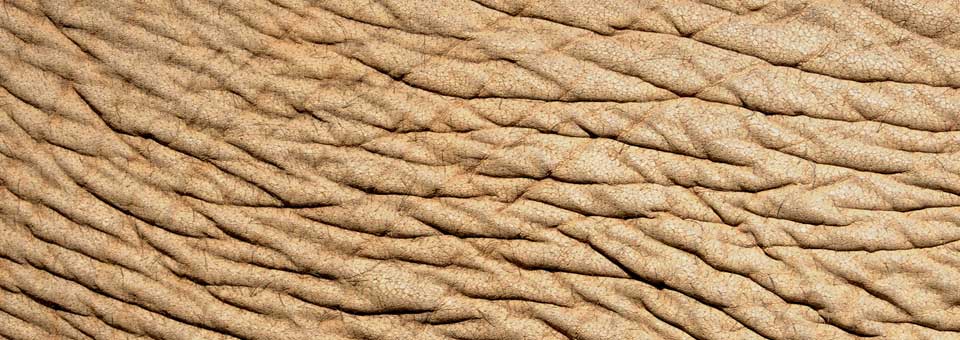
Even though the humidity stays high for most of the year in South Florida, many of my patients have dry skin.
And I know it’s worse for people who live in other parts of the country. Especially during the cold winter months, when you turn up the heat indoors.
It’s like living in a desert!
Your skin gets itchy and flaky. And no matter how much money you spend on drugstore moisturizers, nothing seems to help.
Sound about right?
Big cosmetic companies make a lot of big promises, but they rarely deliver on them.
And what’s worse…
Their products are loaded with toxic chemicals. These toxins throw your endocrine system out of whack. Some have been linked to cancer, liver or kidney disease, respiratory failure… and even death!
I help my patients soothe their skin without putting their health in danger.
Today, I want to tell you about a common fruit with uncommon healing power for your skin.
The grape.
Believe it or not, the same grapes used to make some of your favorite wines are also great for your skin.
Grape varieties from the Vitis Vinifera group give us wines like Riesling, merlot and chardonnay. Once the juice is squeezed from the grapes, the seeds are pressed to retrieve the oil.
Science shows that grapeseed oil is ideal for nourishing your skin. It’s extremely rich in beta-carotene and vitamins D, C and E.
Grapeseed oil is also an excellent source of essential fatty acids that help prevent wrinkles. This makes it an excellent moisturizer.
These little seeds are also high in antioxidants. You see, plants like olives and grapes are exposed to a lot of burning sun rays. So nature gives them built-in protection against oxidative damage from the sun. These same antioxidants protect us from DNA damage.
[wdca_ad id=”355752″ ]But grapeseed oil is unique. It contains some very special antioxidants called oligomeric proanthocyanidins (OPCs).
OPCs are incredibly strong antioxidants — about 50 times stronger than vitamin C and vitamin E. They work by inhibiting DNA mutations that can lead to skin damage and aging.1
They also help protect your skin’s firmness and resiliency. They work by inhibiting the effects of enzymes that break down elastin and collagen, your skin’s support system.2
And OPCs protect skin against burning from the sun.3 They’ve been shown to prevent skin tumors, reduce their size, and speed up their death.4
I often recommend grapeseed oil to my patients as a healing moisturizer. It is very light, absorbs quickly, and can be used even by people with sensitive skin.
And because it’s non-comedogenic, grapeseed oil won’t clog your pores. So it’s an excellent choice for acne-prone skin.
Hollywood star Emma Stone swears by grapeseed oil. That’s all she’ll use on her face because she says she’s “seriously allergic to everything.”
And she’s known for her gorgeous complexion. She was the face of a major cosmetic company a few years ago.
How to use grapeseed oil
Just apply three or four drops of grapeseed oil to your face with your fingers or a cotton pad. Massage it into areas with scars, blemishes or rough skin. It can even help erase dark undereye circles.
You can also mix it with another of my favorite moisturizing oils — coconut oil.
Grapeseed oil is also helpful to remove makeup. Just gently swipe it over your eyes with a cotton pad to remove mascara, eyeliner and eye shadow.
But don’t buy any cheap grapeseed oil.
You see, it’s difficult to get the oil out of the tiny grape seeds. To cut costs, most producers use chemical solvents like hexane to draw the oils out.
Others heat the seeds to very high temperatures while pressing the oil. That can destroy many of the beneficial compounds.
Look for organic, cold-pressed grapeseed oil. Cold-pressing uses no heat or chemical treatment and retains more health benefits. You might pay a bit more, but it’s worth it.
To Your Good Health,
![]()
Al Sears, MD, CNS
1. Kora? RR, Khambholja KM. “Potential of herbs in skin protection from ultraviolet radiation.” Pharmacognosy Reviews. 2011;5(10):164-173.
2. The Netherlands: i.BioCeuticals,™llc; 2008. Masquelier’s® OPCs and French Maritime Pine Bark Extract. Accessed 1/12/17.
3.”OPC-Proanthocyanidin.” 1994 4:1–4. Wellness Advocate; A Total Wellness Newsletter. Accessed 1/12/17.
4. Baliga MS, Katiyar SK. “Chemoprevention of photocarcinogenesis by selected dietary botanicals.” Photochem Photobiol Sci. 2006;5:243–53.








